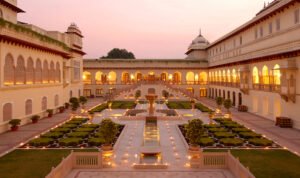India’s social structure has deep historical roots and has evolved through various dynasties, empires, and philosophies. The organization of society in ancient India was a reflection of its cultural, religious, and economic developments. From the Vedic period to the rise of the great empires, India’s social system laid the foundation for a unique and complex societal framework that continues to influence modern India.
Here’s a detailed exploration of the social structures in ancient India:
1. Varna System: The Fourfold Classification
The Varna system is perhaps the most well-known social structure in ancient India, often associated with the Vedic texts and later Hindu society. It is a form of social stratification that classifies people into four primary categories or “varnas.”
Brahmins: The priestly class, responsible for religious rituals, teaching, and scholarship. They were considered the highest social group.
Kshatriyas: The warrior and ruling class, responsible for protection, governance, and warfare. They were the second in the hierarchy.
Vaishyas: The merchant and agricultural class, responsible for trade, commerce, and farming. They supported the economy and were third in rank.
Shudras: The working class, responsible for serving the above three varnas. They performed manual labor and service-related tasks.
2. The Emergence of the Caste System
While the Varna system was a broad classification, over time it became more rigid, eventually evolving into the caste system (also known as Jati). The caste system led to a complex social hierarchy, with individuals born into specific communities based on their varna.
Jatis (sub-castes) emerged, often determined by occupation, and could vary by region and profession.
The caste system became more deeply ingrained in society, and individuals’ roles and responsibilities were largely determined by their caste.
3. The Role of Women in Ancient Indian Society
Ancient India had a patriarchal society, but the role of women varied significantly across different periods, regions, and social classes.
In Vedic society, women held an important role, particularly in religious ceremonies. Gargi Vachaknavi and Maitreyi are examples of learned women philosophers who contributed to Vedic thought.
During the Maurya and Gupta periods, women’s roles in politics, education, and administration were more defined. The Gupta era is often considered a golden age for women, with increased literacy and cultural contributions.
However, the later periods, especially during medieval India, saw a decline in women’s status, with restricted mobility, child marriage, and sati becoming more prevalent.
4. Kingdoms and Ruling Elite
India’s social structure also had an important political layer, which was marked by kingships, warrior clans, and governing elites.
The Maharajas or kings were at the top of the political hierarchy, ruling over vast territories.
Royal families were supported by military commanders, officials, and nobles who helped manage the kingdom’s administration and defense.
The political structure often followed a feudal system, where local chiefs and landlords had significant autonomy over their regions.
5. Religious Influence on Social Structure
Religion, particularly Hinduism, had a significant influence on the social structure in ancient India. The Varna system was closely tied to religious ideas about karma and dharma.
Brahmins, as the custodians of religious rituals, had the responsibility to uphold religious practices, and thus, their social status was considered divinely ordained.
Hindu texts such as the Rigveda, Upanishads, and Manusmriti (which codified social laws) reinforced the roles of each varna and justified the social order as part of the cosmic order.
Buddhism and Jainism emerged as alternatives to the rigid social system, promoting ideas of equality and non-violence. However, these religions were not able to entirely dismantle the caste system.
6. The Influence of Trade and Economy on Social Hierarchy
Trade and commerce played a vital role in shaping India’s social structure. The Vaishyas, as traders and merchants, held a significant position in society, often accumulating wealth and influence.
India’s strategic position on ancient trade routes, such as the Silk Road, facilitated the exchange of goods, ideas, and culture.
Cities like Pataliputra, Mathura, and Ujjain became vibrant commercial hubs, where merchant guilds played a crucial role in society.
Artisans, craftspeople, and traders formed their own communities or guilds, contributing to the economy and culture.
7. Jainism and Buddhism: Challenging Traditional Structures
Both Jainism and Buddhism arose as movements challenging the traditional social hierarchy:
Buddhism, founded by Gautama Buddha, rejected the caste system, promoting the idea that all individuals, regardless of their birth, could achieve nirvana (enlightenment).
Jainism, founded by Mahavira, also opposed the varna system, focusing on principles of ahimsa (non-violence) and equality.
Both religions provided opportunities for individuals outside the traditional varna system, such as those from lower castes, to rise above their social status through spiritual practices.
8. The Village System: Foundation of Rural Society
Ancient Indian society was primarily agrarian, and the village formed the basic unit of life for most of the population. The panchayat system (a council of elders) played an important role in local governance and community decisions.
Villages were self-sustaining, with each member contributing to the collective welfare.
The landowner class controlled the agricultural production, and the peasants worked the land. The artisans and traders added economic value to the village, while priests and teachers maintained religious and educational traditions.
Conclusion: The Dynamic Evolution of Social Structures
India’s ancient social structure was a complex blend of religious beliefs, economic practices, and political authority, with each community and individual playing a distinct yet interconnected role. While the Varna system provided a broad framework for social organization, it evolved over time into the more rigid caste system, which remains a subject of great social discussion today.
Despite the strictness of the social orders, India’s social system was fluid in many ways, allowing individuals to break through boundaries through spiritual practice, economic prosperity, and intellectual achievements. This flexibility in social mobility made India’s social structure unique and fascinating through history.









